John Hurrell – 9 August, 2022
In the current 2022 exhibition there are some changes in McMillan's rendering of smeared rain on glass, where the artist is using diluted white drips directionally flicked on like Jackson Pollock. It seems to be a calculated reference to art history (Pollock's fatal car crash?) and is not so successful illusionistically.
In this exhibition of seven modest-sized acrylic paintings from Auckland artist Gary McMillan, we see the themes he has shown interest in for some years now: inclement Auckland weather as seen through the wet windows of moving cars, and urban vistas in the form of the fleeting shapes of street lights, power poles, motorway signage, rooftops and trees—all rendered in delicate hazy mists of tiny brush-applied dots; usually coloured, but sometimes in variations of grey.
There are a couple of exceptions to the above. Scene 53, 2022 shows a rural landscape through the windscreen of a moving car, and Scene 49, 2021, of a view through another rain-soaked car window, is a gorgeous little abstraction—a ‘pointillist’ blurry composition—that (for me) is the star of the exhibition.
Outside presents some lovely early works made in black and white and (occasionally) coloured greys. Overcast, 2005 is particularly elegant with its two light poles facing opposite directions. Scene 3, 2011 is also very striking with its very dark greenish black and again, use of elegant negative spaces. It was shown earlier in Hamilton in 2013 in a show with Ruth Cleland.
In this current 2022 exhibition there are some changes in McMillan’s rendering of smeared rain on glass, where the artist is using diluted white drips directionally flicked on like Jackson Pollock. It seems to be a calculated reference to art history (Pollock’s fatal car crash?) and is not so successful illusionistically.
Interestingly McMillan’s use of tiny densely positioned dots, though not retinally mixing like say, Seurat, are deeply satisfying as hazes to be pored over. Maybe they have connotations of fuzzy and still fading memory—as well as contemporary meteorological and vehicular observations—besides links to distant art history? Beautifully crafted and optically pleasurable, they cause each visitor to involuntarily linger—effortlessly.
John Hurrell

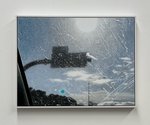
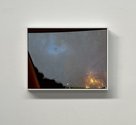

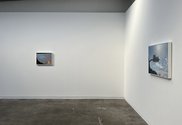
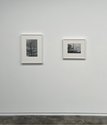
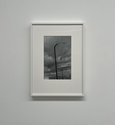


 Advertising in this column
Advertising in this column Two Rooms presents a program of residencies and projects
Two Rooms presents a program of residencies and projects



This Discussion has 0 comments.
Comment
Participate
Register to Participate.
Sign in
Sign in to an existing account.